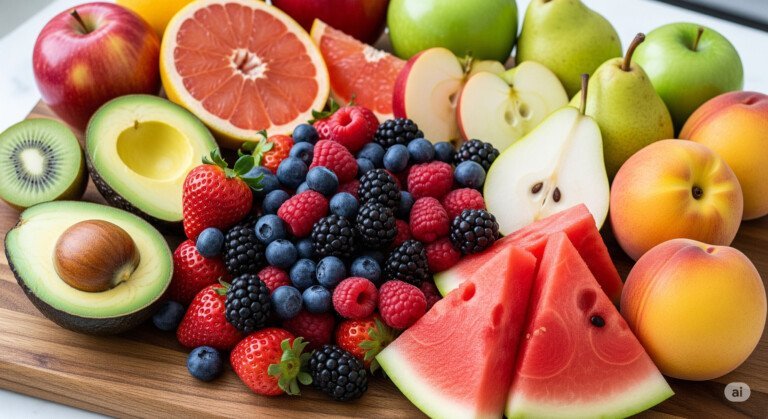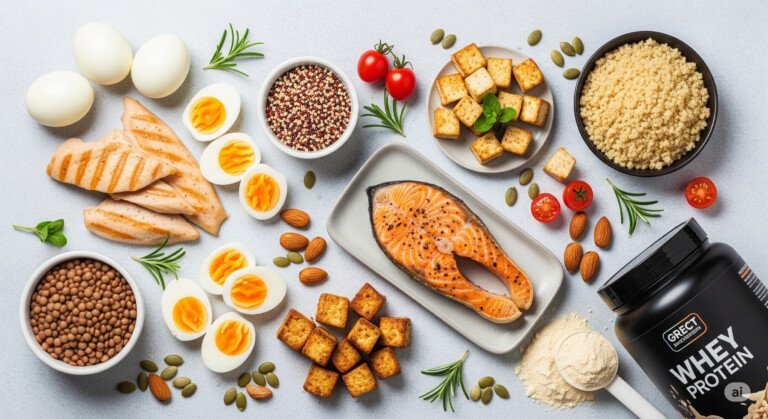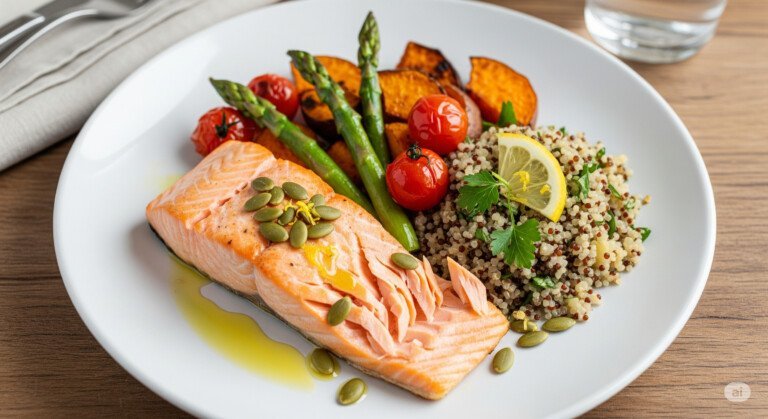7 Incredible Intermittent Fasting Weight Loss Secrets
1. Shocking Truth About Intermittent Fasting for Weight Loss (A Personal Journey)
Hello, and welcome. If you’re anything like I was a few years ago, you’ve probably tried everything to lose weight. You’ve counted calories until your head spun, cut out entire food groups, and felt the pangs of hunger as a constant, nagging companion. Have you ever felt that mix of dread and faint hope every time you step on the scale? I know I did. My journey was a cycle of extreme diets, rapid weight loss, and an even faster rebound. I would lose 10 pounds and gain back 15, convinced that my body was simply fighting against me. I was exhausted, not just physically, but emotionally. That’s why I want to share my journey with intermittent fasting weight loss and how it changed my entire relationship with food and my body.
Thank you for reading this post, don't forget to subscribe!

My name is Michael K. Brown, and founded Thrive in Serenity. My mission is to help people just like you find a path to a healthier, more intentional life without the constant struggle. For a long time, the diet industry had me convinced that losing weight was a game of deprivation and willpower, a battle I was constantly losing.
Then, I stumbled upon intermittent fasting. I’ll admit, I was skeptical at first. The idea of not eating for a long period seemed extreme. But something about its simplicity resonated with me. It felt less like a diet and more like a lifestyle change. And what I discovered was nothing short of incredible.
This isn’t a story about a quick fix. It’s about a powerful tool that, when used correctly, can transform not only your body but your mindset. This is the ultimate beginner’s guide to intermittent fasting weight loss.


2. Understanding Intermittent Fasting for Beginners
At its core, intermittent fasting (IF) isn’t about dieting in the traditional sense. You’re not cutting calories or eliminating food groups. Instead, you’re focusing on a cyclical pattern of eating and fasting. The most popular method, and the one I started with, is the 16:8 intermittent fasting plan.
How the 16:8 Intermittent Fasting Plan Works
The name says it all: you fast for 16 hours and eat all your meals within an 8-hour window. For a beginner, this is the most accessible and sustainable way to start. It sounds intimidating, but think about it: if you finish dinner at 7 p.m., you just need to wait until 11 a.m. the next morning to have your first meal. Much of that fasting period is spent while you’re sleeping. I found that a little bit of black coffee or unsweetened tea in the morning made it surprisingly easy.
The beauty of the 16:8 schedule is its flexibility. Your eating window can be from 11 a.m. to 7 p.m., or maybe 1 p.m. to 9 p.m. It all depends on what fits your lifestyle. This flexibility is what made me stick with it. It wasn’t about rigid rules; it was about finding a rhythm that worked for my body and my daily life.
To make the process even smoother, I found that establishing a healthy morning routine helped me push through the initial hunger pangs. Practices like mindful movement and hydration became my allies. This simple habit can lay a foundation for overall well-being. For more on this, check out our guide on The Best Healthy Lifestyle for Beginners.


3. Does IF Work for Fat Loss?
The short answer is a resounding yes. I’ve seen it in my own life, and I’ve seen it help countless others. A study published in the journal Cell Metabolism confirmed that IF can lead to significant reductions in body weight and visceral fat, which is the harmful fat stored around your organs.
How does it work? When you fast, your body has a chance to burn through its stored glucose and begins to tap into your fat reserves for energy. It’s a natural metabolic shift that makes your body more efficient at burning fat. This is the core mechanism behind the incredible intermittent fasting weight loss results.
Beyond the fat-burning aspect, there’s also the benefit of simply eating less. By condensing your eating window, you’re less likely to consume as many calories, which can naturally lead to a calorie deficit without the pain of counting every single bite.
My personal journey was transformative. In the first month alone, I lost five pounds, but what was more profound was how I felt. I had more energy, my mind felt clearer, and I no longer felt controlled by my cravings. It wasn’t just about a number on the scale; it was about reclaiming control over my health.


4. Avoiding Common Intermittent Fasting Mistakes
When you’re first starting out, it’s easy to make a few slip-ups. I certainly did. Understanding these common pitfalls can save you from frustration and help you achieve lasting intermittent fasting weight loss results.
Here are the most common mistakes and how to fix them:
- Not Drinking Enough Water. This is the most common mistake. When you’re fasting, it’s easy to forget to hydrate, which can lead to headaches and fatigue. The Fix: I found that keeping a large bottle of water with me at all times was a game-changer.
- Binge Eating During Your Window. The temptation to overeat during your eating window is strong, especially when you’re first starting out. The Fix: The goal is to eat until you’re satisfied, not until you’re stuffed. Listen to your body and focus on mindful eating. Our guide on Mindful Eating for Fat Loss can provide some great tips here.
- Ignoring Your Body’s Signals. IF isn’t a one-size-fits-all solution. The Fix: If you feel dizzy, unwell, or overly hungry, listen to your body. You might need to adjust your window or your routine. It’s all about creating a sustainable practice, not following a rigid set of rules.


5. What to Eat: Your Guide to Intermittent Fasting Foods
This is a key part of the puzzle. While IF gives you flexibility, it’s not a license to eat whatever you want. For sustainable intermittent fasting weight loss, what you eat is just as important as when you eat it. The goal is to consume nutrient-dense, whole foods that keep you full and energized.
Focus on these core food groups:
- Protein: Lean meats, eggs, fish, and legumes are great for satiety and muscle maintenance.
- Healthy Fats: Avocado, nuts, and olive oil can help you feel full and support brain health.
- Fiber-Rich Foods: Vegetables, fruits, and whole grains are essential for digestive health and sustained energy.


Eating a balanced diet during your eating window is crucial. It’s not about restricting food but about making smart choices that fuel your body. The food you eat should be a source of nourishment and energy, not just a way to fill a void. For me, connecting with my body through practices like yoga helped me make better food choices. You can explore different forms of yoga with our guide on What Is Your Yoga Discipline?.


6. Real Stories, Real Intermittent Fasting Results
The journey with intermittent fasting is a personal one, and everyone’s results will look a little different. I’ve seen clients lose anywhere from 10 to 50 pounds, but the biggest win is always the shift in their mindset. They go from feeling controlled by food to feeling empowered by it.
One client, Sarah, started IF because she was tired of feeling sluggish. She didn’t want to go on another restrictive diet. We focused on the 16:8 plan, and within three months, she’d lost 15 pounds. But more importantly, she said she felt like she had “reclaimed her power.” She no longer felt stressed around food and was able to enjoy meals with her family without guilt. This is the kind of transformation I live for—one that goes beyond the scale.
It’s important to remember that this is a long-term journey. There will be days when you mess up, and that’s okay. The key is to be compassionate with yourself and get back on track the next day. This gentle, mindful approach is at the core of holistic healing, a practice we explore further in our guide on The Power of Pranic Healing.


7. Your Call to Action: Take the First Step Today for Intermittent Fasting Success
The journey to a healthier, happier you starts with a single step. Intermittent fasting weight loss is more than just a diet; it’s a tool for conscious living. It’s a way to reconnect with your body, listen to its signals, and find a good rhythm.
If you’re ready to stop the endless cycle of dieting and start living a life of intentional wellness, I encourage you to give intermittent fasting a try. Start with the 16:8 plan, listen to your body, and be patient with the process.
To further support your journey, I invite you to join our community at Thrive in Serenity. We offer resources, guidance, and a supportive network to help you along the way. Your transformation is waiting.
FAQ
1. Will intermittent fasting make me lose muscle mass?
This is a common concern. Research suggests that IF, when combined with proper protein intake and strength training, can help you lose fat while preserving muscle mass. The key is to make sure you’re getting enough protein during your eating window.
2. Can I drink anything during the fasting window?
Yes! You can drink black coffee, unsweetened tea, and water. These beverages won’t break your fast and can actually help you feel less hungry.
3. Is intermittent fasting safe for everyone?
While many people benefit from IF, it’s not for everyone. If you are pregnant, have a history of eating disorders, or have certain medical conditions, you should consult with your doctor before starting.
4. How long does it take to see intermittent fasting results?
Most people start to see results within the first few weeks, but significant changes usually happen after a few months of consistent practice. The key is to be patient and stick with it.
Disclaimer:
This post may contain affiliate links. If you purchase through them, we may earn a small commission at no extra cost to you. Also, this content is for informational purposes only and does not substitute professional medical advice.







